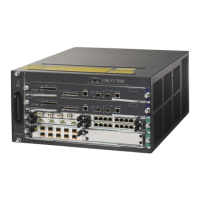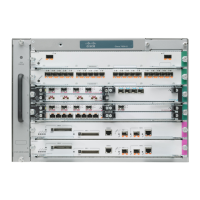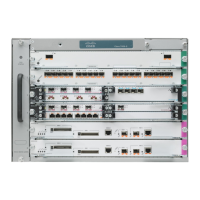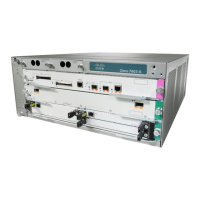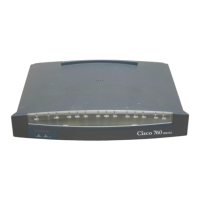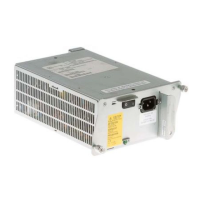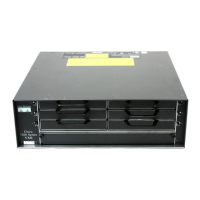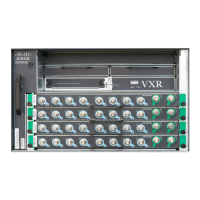19-2
Cisco 7600 Series Router Cisco IOS Software Configuration Guide—12.1E
78-14064-04
Chapter 19 Configuring IP Unicast Layer 3 Switching on Supervisor Engine 1
Understanding How IP MLS Works
Understanding How IP MLS Works
These sections provide an overview of IP MLS and describe how IP MLS works:
• IP MLS Overview, page 19-2
• IP MLS Flows, page 19-2
• Layer 3 MLS Cache, page 19-3
• Flow Masks, page 19-3
• Layer 3-Switched Packet Rewrite, page 19-4
• IP MLS Operation, page 19-5
IP MLS Overview
IP MLS provides high-performance hardware-based Layer 3 switching for Cisco 7600 series routers. IP
MLS switches unicast IP data packet flows between IP subnets using advanced application-specific
integrated circuit (ASIC) switching hardware, which offloads the processor-intensive packet routing
from network routers.
The packet forwarding function is moved onto Layer 3 switches whenever a complete switched path
exists between two hosts. Standard routing protocols, such as Open Shortest Path First (OSPF),
Enhanced Interior Gateway Routing Protocol (EIGRP), Routing Information Protocol (RIP), and
Intermediate System-to-Intermediate System (IS-IS), are used for route determination.
In addition, IP MLS provides traffic statistics you can use to identify traffic characteristics for
administration, planning, and troubleshooting. IP MLS uses NetFlow Data Export (NDE) to export flow
statistics
.
Note For more information about NDE, see Chapter 33, “Configuring NDE.”
IP MLS Flows
Layer 3 protocols, such as IP and Internetwork Packet Exchange (IPX), are connectionless—they deliver
every packet independently of every other packet. However, actual network traffic consists of many
end-to-end conversations, or flows, between users or applications.
A flow is a unidirectional sequence of packets between a particular source and destination that share the
same protocol and transport-layer information. Communication from a client to a server and from the
server to the client are separate flows. For example, Telnet traffic transferred from a particular source to
a particular destination comprises a separate flow from File Transfer Protocol (FTP) packets between
the same source and destination.
Flows are based only on Layer 3 addresses, which allow IP traffic from multiple users or applications to
a particular destination to be carried on a single flow if only the destination IP address is used to identify
a flow.

